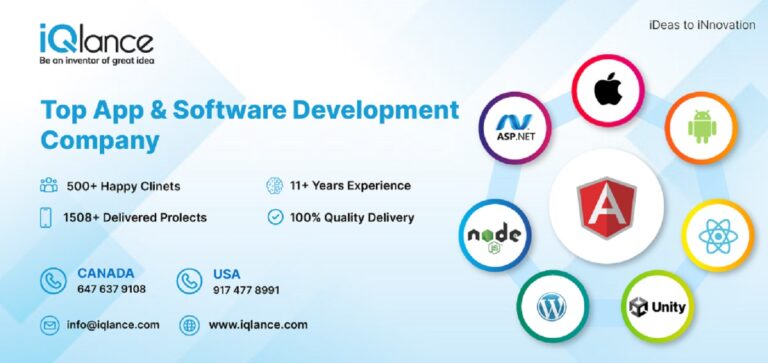Unlock the power of real-time data with AWS AppSync.
Introduction to AWS AppSync
AWS AppSync is a powerful service offered by Amazon Web Services (AWS) that simplifies the process of building and deploying scalable and secure applications. In this article, we will provide an introduction to AWS AppSync and explore its key features and benefits.
At its core, AWS AppSync is a managed service that allows developers to easily create and deploy GraphQL APIs. GraphQL is a query language for APIs and a runtime for executing those queries with existing data. It provides a flexible and efficient approach to data fetching and manipulation, allowing clients to request only the data they need and reducing the number of round trips to the server.
One of the key advantages of using AWS AppSync is its ability to automatically generate GraphQL APIs based on existing data sources. This means that developers can leverage their existing databases, such as Amazon DynamoDB, Amazon Aurora, or even custom data sources, and expose them as GraphQL APIs without the need for manual coding. This greatly simplifies the development process and reduces the time and effort required to build and maintain APIs.
AWS AppSync also provides real-time capabilities, allowing developers to build applications that can push updates to clients in real-time. This is achieved through the use of GraphQL subscriptions, which enable clients to subscribe to specific data changes and receive updates as soon as they occur. Real-time updates are crucial for applications that require instant notifications or collaborative features, such as chat applications or real-time dashboards.
Another important feature of AWS AppSync is its built-in offline support. With offline support, applications can continue to function even when there is no network connectivity. AWS AppSync automatically synchronizes data between the client and server when the network becomes available again, ensuring a seamless user experience. This is particularly useful for mobile or IoT applications that may frequently experience network interruptions.
In addition to these core features, AWS AppSync provides a range of other capabilities that enhance the development experience. For example, it offers fine-grained access control, allowing developers to define granular permissions and authorization rules for their APIs. This ensures that only authorized users can access and modify data, improving security and compliance.
AWS AppSync also integrates seamlessly with other AWS services, such as AWS Lambda, Amazon Cognito, and Amazon S3. This allows developers to leverage the full power of the AWS ecosystem and build highly scalable and resilient applications. For example, AWS Lambda functions can be used to perform complex data transformations or business logic, while Amazon Cognito can handle user authentication and authorization.
In conclusion, AWS AppSync is a powerful service that simplifies the process of building and deploying scalable and secure applications. Its ability to automatically generate GraphQL APIs, provide real-time capabilities, and offer offline support makes it an ideal choice for a wide range of applications. By leveraging AWS AppSync, developers can focus on building innovative features and delivering value to their users, without worrying about the underlying infrastructure.
Key Features and Benefits of AWS AppSync
AWS AppSync is a powerful service offered by Amazon Web Services (AWS) that simplifies the process of building and deploying scalable and secure applications. It provides a managed GraphQL service that allows developers to easily create and manage APIs for their applications. In this article, we will explore the key features and benefits of AWS AppSync.
One of the key features of AWS AppSync is its ability to automatically generate GraphQL APIs based on a schema definition. This means that developers can define the data model for their application using the GraphQL schema language, and AWS AppSync will take care of creating the necessary resolvers and data sources to interact with the underlying data storage. This greatly simplifies the process of building APIs, as developers no longer need to write boilerplate code for handling CRUD operations.
Another important feature of AWS AppSync is its real-time capabilities. With AppSync, developers can easily build real-time applications that can push updates to clients in real-time. This is achieved through the use of GraphQL subscriptions, which allow clients to subscribe to specific data changes and receive updates as soon as they occur. This is particularly useful for applications that require real-time collaboration or need to display live data updates to users.
AWS AppSync also provides built-in support for offline data synchronization. This means that applications built with AppSync can continue to function even when there is no network connectivity. AppSync automatically caches data on the client device and synchronizes it with the server once the network connection is restored. This is a crucial feature for mobile and IoT applications that often operate in environments with limited or intermittent connectivity.
Security is another area where AWS AppSync excels. It provides fine-grained access control through the use of GraphQL directives. Developers can define authorization rules at the field level, allowing them to control who can access and modify specific data. This ensures that only authorized users can perform certain operations and helps protect sensitive data from unauthorized access.
AWS AppSync also integrates seamlessly with other AWS services. For example, it can be easily connected to AWS Lambda functions to perform serverless computations or to Amazon DynamoDB for storing and retrieving data. This tight integration with other AWS services allows developers to leverage the full power of the AWS ecosystem and build highly scalable and resilient applications.
In terms of benefits, AWS AppSync offers several advantages over traditional REST APIs. Firstly, it provides a more efficient way of fetching data by allowing clients to specify exactly what data they need. This reduces the amount of data transferred over the network and improves the performance of the application. Additionally, the real-time capabilities of AppSync enable developers to build more interactive and engaging applications that can provide instant updates to users.
Furthermore, AWS AppSync simplifies the process of building and maintaining APIs by automating many of the tasks involved. Developers can focus on defining the data model and business logic of their application, while AppSync takes care of the underlying infrastructure and boilerplate code. This reduces development time and allows developers to iterate quickly on their applications.
In conclusion, AWS AppSync is a powerful service that simplifies the process of building and deploying scalable and secure applications. Its key features, such as automatic API generation, real-time capabilities, offline data synchronization, and fine-grained access control, make it an ideal choice for developers looking to build modern and interactive applications. With its seamless integration with other AWS services and the benefits it offers over traditional REST APIs, AWS AppSync is a valuable tool for developers looking to leverage the power of GraphQL in their applications.
Building Real-time Applications with AWS AppSync
Understanding AWS AppSync
AWS AppSync is a powerful service offered by Amazon Web Services (AWS) that allows developers to build real-time applications with ease. With AppSync, developers can easily create and deploy scalable GraphQL APIs that enable real-time data synchronization and offline capabilities. In this article, we will explore the key features and benefits of AWS AppSync, as well as how it can be used to build robust and responsive applications.
One of the main advantages of using AWS AppSync is its ability to simplify the development process. With AppSync, developers can define their data models and business logic using GraphQL, a query language for APIs. GraphQL allows developers to specify the exact data requirements of their applications, reducing the amount of data transferred over the network and improving performance. Additionally, GraphQL provides a strongly-typed schema, which helps catch errors early in the development process and improves overall code quality.
Another key feature of AWS AppSync is its real-time data synchronization capabilities. With AppSync, developers can easily subscribe to changes in their data and receive updates in real-time. This is particularly useful for applications that require real-time updates, such as chat applications or collaborative editing tools. By leveraging the power of GraphQL subscriptions, developers can ensure that their applications are always up to date and provide a seamless user experience.
AWS AppSync also offers offline capabilities, allowing applications to continue functioning even when there is no network connectivity. With AppSync, developers can define data caching and synchronization strategies, ensuring that data is stored locally on the device and synchronized with the server when connectivity is restored. This is particularly useful for mobile applications that may frequently encounter network interruptions. By leveraging AppSync’s offline capabilities, developers can provide a consistent user experience regardless of network conditions.
In addition to its core features, AWS AppSync integrates seamlessly with other AWS services, providing developers with a comprehensive set of tools to build their applications. For example, AppSync can be easily integrated with AWS Lambda, a serverless compute service, to execute custom business logic. This allows developers to extend the functionality of their applications without having to manage servers or infrastructure. Furthermore, AppSync can be integrated with Amazon DynamoDB, a fully managed NoSQL database service, to store and retrieve data efficiently.
To get started with AWS AppSync, developers can use the AWS Management Console, AWS CLI, or AWS SDKs to create and configure their APIs. The console provides a user-friendly interface for defining data models, configuring data sources, and setting up resolvers. The CLI and SDKs, on the other hand, allow developers to automate the deployment process and integrate AppSync into their existing development workflows.
In conclusion, AWS AppSync is a powerful service that simplifies the development of real-time applications. With its support for GraphQL, real-time data synchronization, offline capabilities, and seamless integration with other AWS services, AppSync provides developers with the tools they need to build robust and responsive applications. Whether you are building a chat application, a collaborative editing tool, or a mobile application, AWS AppSync can help you deliver a seamless user experience. So why wait? Start exploring the possibilities of AWS AppSync today and take your applications to the next level.
Implementing Data Synchronization with AWS AppSync
Understanding AWS AppSync
AWS AppSync is a fully managed service that simplifies the process of building scalable and secure applications by enabling real-time data synchronization between devices and the cloud. With AppSync, developers can easily create and deploy GraphQL APIs that allow clients to interact with data sources such as Amazon DynamoDB, Amazon Aurora, and AWS Lambda.
Implementing data synchronization with AWS AppSync is a crucial step in building modern applications that require real-time updates and offline capabilities. By leveraging the power of GraphQL, developers can efficiently fetch and update data from multiple sources, ensuring that clients always have access to the most up-to-date information.
One of the key features of AWS AppSync is its ability to handle real-time data updates. With AppSync, developers can define subscriptions that allow clients to receive real-time updates whenever data changes. This is particularly useful in scenarios where multiple clients need to be notified of changes made by other clients. For example, in a collaborative document editing application, AppSync can be used to notify all connected clients whenever a document is modified by another user.
In addition to real-time updates, AWS AppSync also provides offline capabilities. This means that clients can continue to interact with the application even when they are offline or have a poor internet connection. AppSync achieves this by automatically caching data on the client device and synchronizing it with the server when a connection is available. This ensures that users can still access and modify data even in challenging network conditions.
To implement data synchronization with AWS AppSync, developers need to define a GraphQL schema that describes the data model and operations supported by the API. The schema acts as a contract between the client and the server, specifying the available data types, queries, mutations, and subscriptions. Once the schema is defined, developers can use the AWS AppSync console or the AWS Command Line Interface (CLI) to create the API and connect it to the desired data sources.
When defining the schema, developers can take advantage of GraphQL’s powerful features such as type system, queries, mutations, and subscriptions. The type system allows developers to define custom data types and their relationships, providing a clear and structured representation of the data model. Queries enable clients to fetch data from the server, while mutations allow clients to modify data. Subscriptions, as mentioned earlier, enable real-time updates by allowing clients to subscribe to specific data changes.
Once the API is created, developers can start integrating it into their applications. AWS AppSync provides client SDKs for various platforms, including JavaScript, iOS, and Android, making it easy to interact with the API from different devices. These SDKs provide a set of methods and utilities that handle the communication with the server, as well as the caching and synchronization of data.
In conclusion, implementing data synchronization with AWS AppSync is essential for building modern applications that require real-time updates and offline capabilities. By leveraging the power of GraphQL, developers can easily create and deploy APIs that enable clients to interact with data sources and receive real-time updates. With AWS AppSync, developers can build scalable and secure applications that provide a seamless user experience, even in challenging network conditions.
Best Practices for Optimizing Performance in AWS AppSync
Understanding AWS AppSync
AWS AppSync is a fully managed service that simplifies the process of building, deploying, and scaling applications that require real-time data updates. It allows developers to create flexible APIs that can securely access and manipulate data from multiple sources, including AWS services, third-party APIs, and on-premises databases. With its powerful features and capabilities, AWS AppSync has become a popular choice for developers looking to optimize performance in their applications.
One of the best practices for optimizing performance in AWS AppSync is to carefully design your GraphQL schema. The schema defines the types of data that can be queried and manipulated through the API. By carefully defining the schema, you can ensure that only the necessary data is fetched and processed, reducing the overall response time of your application. Additionally, you should consider using batch operations to fetch multiple items in a single request, further improving performance.
Another important aspect of optimizing performance in AWS AppSync is to leverage caching effectively. AppSync provides built-in caching capabilities that can significantly reduce the number of requests made to your data sources. By caching frequently accessed data, you can minimize the latency and cost associated with fetching data from external sources. However, it is crucial to configure caching appropriately to avoid stale data and ensure consistency.
To further enhance performance, you should consider using data store-specific optimizations. For example, if you are using Amazon DynamoDB as your data source, you can take advantage of DynamoDB’s features like global secondary indexes and fine-grained access control to optimize data retrieval and security. Similarly, if you are using Amazon Aurora Serverless, you can leverage its auto-scaling capabilities to handle varying workloads efficiently.
Monitoring and analyzing the performance of your AWS AppSync API is essential for identifying bottlenecks and optimizing your application. AWS AppSync integrates with AWS CloudWatch, allowing you to collect and analyze metrics such as latency, error rates, and data transfer. By monitoring these metrics, you can identify areas that require optimization and take proactive measures to improve performance.
In addition to monitoring, you should also consider implementing performance testing and load testing to simulate real-world scenarios and identify potential performance issues. By subjecting your application to different levels of load and stress, you can uncover bottlenecks and fine-tune your application to handle high traffic efficiently. AWS AppSync provides integration with tools like AWS CodePipeline and AWS CodeBuild, making it easier to automate the testing process.
Lastly, it is crucial to stay up to date with the latest updates and best practices for AWS AppSync. AWS regularly releases new features and improvements to enhance performance and security. By keeping yourself informed, you can take advantage of these updates and ensure that your application is utilizing the latest optimizations.
In conclusion, optimizing performance in AWS AppSync requires careful consideration of various factors such as schema design, caching, data store-specific optimizations, monitoring, and testing. By following best practices and staying informed about the latest updates, you can build high-performing applications that deliver real-time data updates efficiently. AWS AppSync provides a powerful platform for developers to create scalable and responsive applications, and by leveraging its features effectively, you can unlock its full potential.
Q&A
1. What is AWS AppSync?
AWS AppSync is a fully managed service that simplifies the development of real-time applications by enabling developers to create GraphQL APIs quickly and easily.
2. What are the key features of AWS AppSync?
Some key features of AWS AppSync include real-time data synchronization, offline data access, built-in data caching, and automatic schema generation.
3. How does AWS AppSync handle real-time data synchronization?
AWS AppSync uses WebSockets to establish a persistent connection between the client and the server, allowing real-time data updates to be pushed to the client in a scalable and efficient manner.
4. Can AWS AppSync work offline?
Yes, AWS AppSync provides offline data access by allowing clients to store and access data locally on the device, even when there is no network connectivity. Once the device is back online, the data is automatically synchronized with the server.
5. How does AWS AppSync handle data caching?
AWS AppSync automatically caches data at multiple levels, including at the client, network, and server levels. This caching mechanism helps improve performance and reduce the number of requests made to the server.










